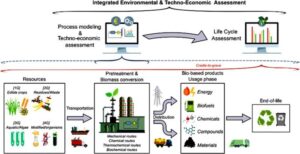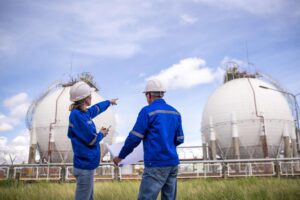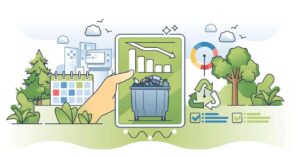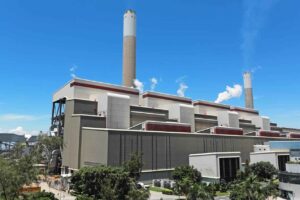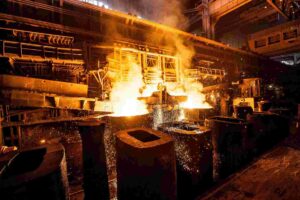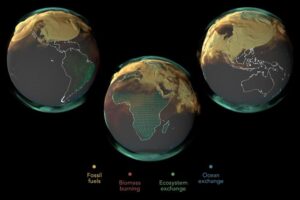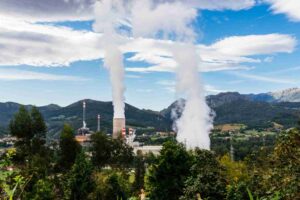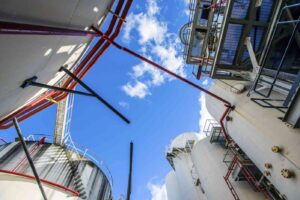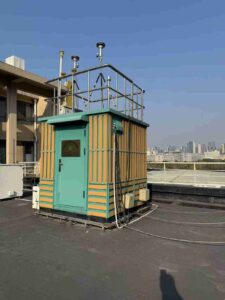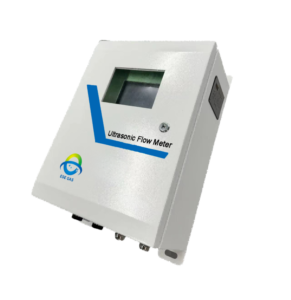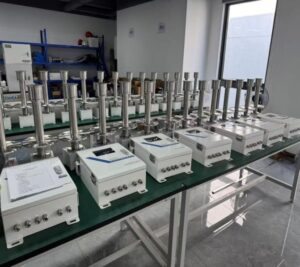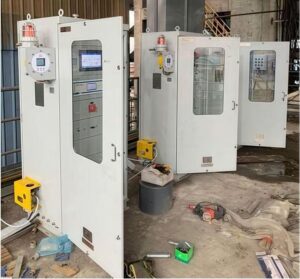As the problem of global warming becomes increasingly serious, the emission and monitoring of greenhouse gases (GHG) have become the focus of international attention. Greenhouse gases such as carbon dioxide (CO2), methane (CH4), nitrous oxide (N2O), etc. have a significant impact on the earth’s climate system. Accurately monitoring the concentration and emissions of these gases is essential for formulating environmental protection policies and taking effective emission reduction measures. As an important detection tool, gas analyzers play an irreplaceable role in greenhouse gas monitoring. This blog will discuss in detail the application, principle, technical characteristics and importance of gas analyzers in greenhouse gas detection in practical applications.
What are Greenhouse Gases?
Greenhouse gases are those gases in the Earth’s atmosphere that absorb and reradiate infrared radiation emitted by the Earth’s surface, thereby increasing the atmosphere’s ability to retain solar heat. The main greenhouse gases include carbon dioxide (CO2), methane (CH4), nitrous oxide (N2O), etc., which have an important impact on the earth’s climate change.
1. Greenhouse effect and its mechanism
The presence of greenhouse gases leads to the Earth’s greenhouse effect. The main mechanisms of this effect include:
Absorption and re-radiation of infrared radiation: Greenhouse gases absorb infrared radiation radiated from the Earth’s surface and then re-radiate part of the radiated energy back to the ground, causing the Earth’s surface temperature to rise.
The relationship between gas concentration and radiation capacity: Different greenhouse gases have different absorption and radiation capacities for infrared radiation, thus affecting the intensity of the greenhouse effect.
2. Sources and impacts of major greenhouse gases (Image source: NRDC)
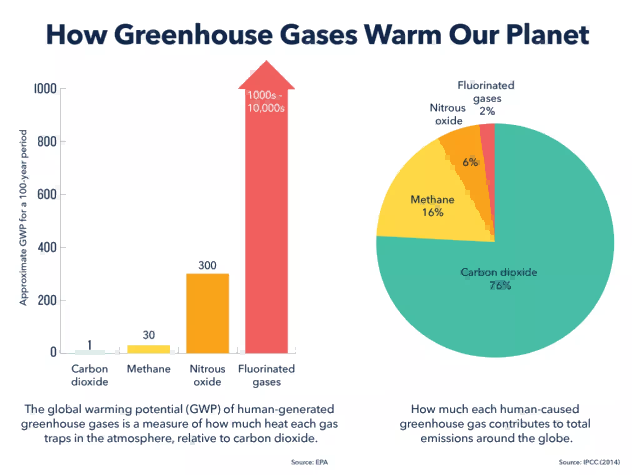
- Carbon dioxide (CO2)
Carbon dioxide is one of the most important greenhouse gases. Its main sources include:
The burning of fossil fuels such as coal, oil and natural gas releases large amounts of carbon dioxide.
Deforestation: Reduces the carbon dioxide absorption capacity of forests.
Industrial processes: Industrial activities such as cement production and steel manufacturing.
The increase in carbon dioxide directly leads to global warming, with far-reaching impacts on sea level rise, extreme weather events and ecosystems.
- Methane (CH4)
Methane is a potent greenhouse gas. Its main sources include:
Agricultural activities: such as the digestive process in livestock and rice cultivation in rice fields.
Landfill: The decomposition of organic matter in landfill releases methane.
Natural gas and oil extraction: Methane leaks during extraction, transportation, and use.
Methane’s greenhouse effect is dozens of times stronger than carbon dioxide’s. Although it stays in the atmosphere for a shorter time, its contribution to global warming cannot be ignored.
- Nitrous oxide (N2O)
Nitrous oxide mainly comes from:
Agricultural activities: especially fertilizer use and soil management practices.
Industrial processes: such as chemical production and combustion processes.
The greenhouse effect of nitrous oxide is dozens of times stronger than that of carbon dioxide. It is also one of the ozone layer destroyers, with multiple impacts on the environment and human health.
- Other greenhouse gases
In addition to the three main greenhouse gases mentioned above, there are some artificially synthesized fluorinated gases (such as hydrofluorocarbons, perfluorocarbons, etc.) and sulfide gases (such as sulfur hexafluoride) that also have a strong greenhouse effect.
The increase in greenhouse gases is one of the main drivers of global warming, causing widespread and far-reaching impacts on the global environment, economy, and society. Reducing greenhouse gas emissions is an urgent task to protect the earth’s ecosystem and maintain human well-being. Through scientific monitoring, international cooperation, and comprehensive response measures, we can effectively slow down the process of climate change and create a healthier and more sustainable future.
Application of Gas Analyzers in Greenhouse Gas Detection
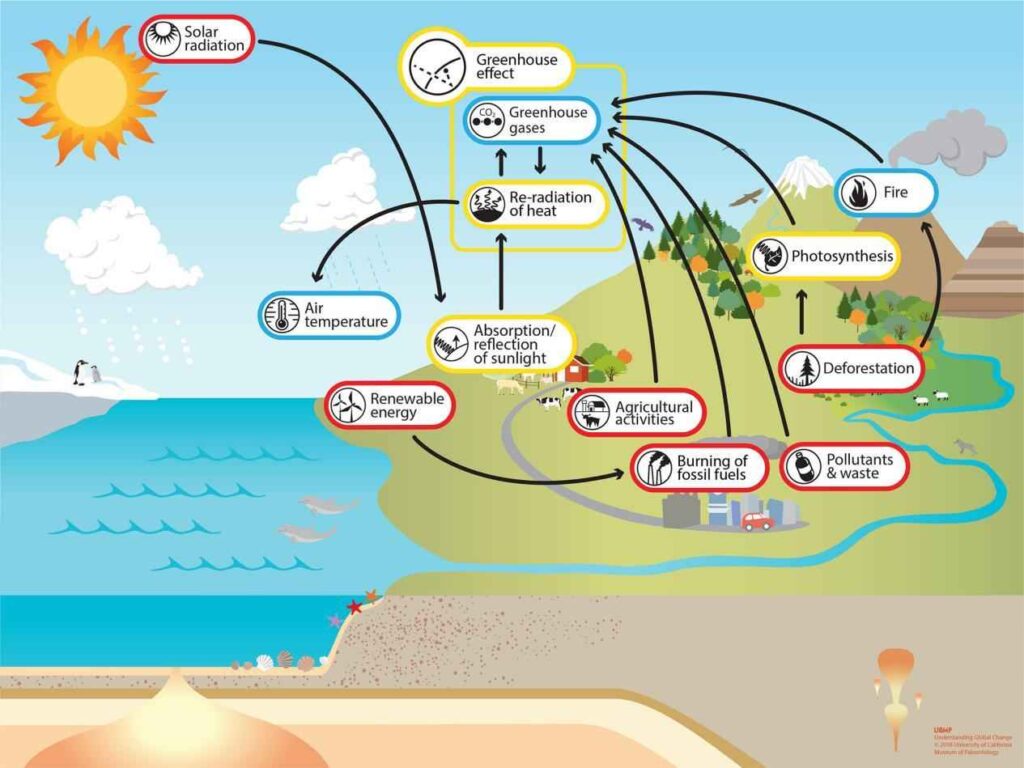
Image source (UNDERSTANDING GLOBAL CHANGE)
1. Real-time monitoring and data collection
Gas analyzers can achieve real-time monitoring and data collection of greenhouse gases, providing a scientific basis for environmental research and policy making. For example, installing gas analyzers at industrial emission sources, agricultural activity areas, urban transportation and other places can monitor the emission of greenhouse gases such as CO2 and CH4 in real time, providing data support for the formulation of emission reduction measures.
2. Long-term observation and trend analysis
By deploying gas analyzers in different areas for a long time, we can obtain long-term change data on greenhouse gas concentrations and analyze their changing trends and patterns. This is of great significance for understanding the impact of climate change and evaluating the effectiveness of emission reduction policies. For example, the National Oceanic and Atmospheric Administration (NOAA) of the United States has deployed gas analyzers in many locations around the world to conduct long-term monitoring of gases such as CO2 and CH4, providing valuable scientific data.
3. Environmental research and scientific experiments
Gas analyzers are widely used in environmental research and scientific experiments. For example, in the study of greenhouse gas source and sink processes, chemical reaction mechanisms, atmospheric transport processes, etc., gas analyzers provide accurate data support. Scientists can use this data to build and verify atmospheric models and gain a deeper understanding of changes in the climate system.
4. Government supervision and policy evaluation
Government departments use the monitoring data of gas analyzers to supervise greenhouse gas emission sources such as industrial enterprises and agricultural activities to ensure that their emissions meet environmental regulations. At the same time, they evaluate the implementation effect of emission reduction policies through monitoring data, adjust policy measures in a timely manner, and improve emission reduction efficiency. For example, China has built multiple greenhouse gas monitoring sites across the country and uses data from gas analyzers to supervise key emission enterprises.
5. International cooperation and data sharing
Global climate change is a transnational issue. Countries are jointly responding to this challenge through cooperation and data sharing. The monitoring data provided by gas analyzers is an important basis for international cooperation. Scientists from various countries share data from gas analyzers to conduct joint research and develop global climate change response strategies. For example, the Global Atmosphere Watch (GAW) program monitors and shares greenhouse gas data through a global network to provide support for global climate policy making.
Technological Development and Innovation of Gas Analyzers
With the development of science and technology, the technology of gas analyzers continues to improve, showing the following development trends:
1. High precision and high sensitivity
Modern gas analyzers use advanced spectroscopy, sensing, and signal processing technologies to achieve high-precision and high-sensitivity detection of greenhouse gases. For example, laser absorption spectroscopy can detect specific gases at extremely low concentrations, making it possible to accurately monitor greenhouse gases.
2. Simultaneous detection of multiple components
Multi-component gas analyzers can detect multiple greenhouse gases at the same time, which improves monitoring efficiency and saves detection time. For example, a Fourier transform infrared spectrometer (FTIR) can detect multiple gas components at the same time, which is suitable for greenhouse gas monitoring in complex environments.
3. Portability and intelligence
Portable gas analyzers are small in size and light in weight, making them convenient for on-site monitoring and mobile measurement. At the same time, intelligent gas analyzers are equipped with data transmission and remote control. They play a vital role in greenhouse gas detection. They can not only provide real-time and accurate monitoring data but also provide strong support for scientific research, policy making, government supervision, and other aspects. With the continuous development of technology, the performance and application areas of gas analyzers will be further expanded, making greater contributions to addressing global climate change and protecting the environment.
Application Cases of Gas Analyzers in Greenhouse Gas Monitoring
1. Industrial emission monitoring
Industrial processes are one of the main sources of greenhouse gas emissions, especially the burning of fossil fuels and cement production. By installing gas analyzers on factory chimneys, the concentrations of gases such as CO2, CH4 and N2O emitted can be monitored in real-time to ensure that emissions comply with environmental regulations. A steel plant installed advanced NDIR gas analyzers to achieve 24-hour monitoring of emission gases, effectively reducing CO2 emissions.
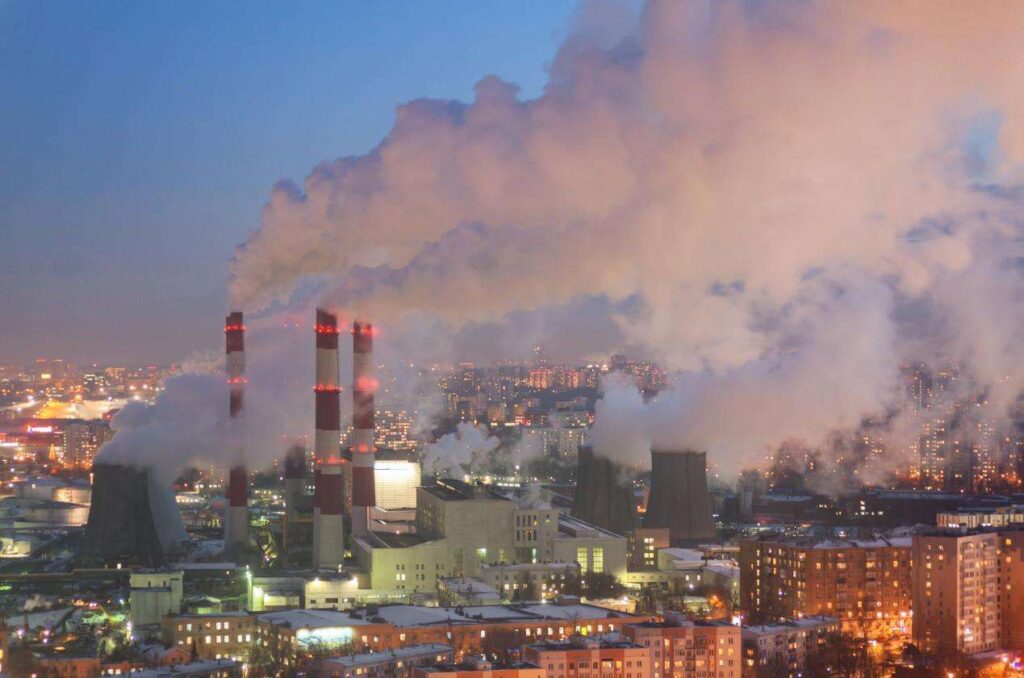
2. Agriculture and animal husbandry monitoring
Agricultural activities, especially methane emissions from rice fields and enteric fermentation of livestock, are important sources of methane. By deploying portable gas analyzers in farmland and pastures, researchers can monitor CH4 and N2O emissions and evaluate the emission reduction effects of different agricultural management measures. For example, in a large pasture, by using a portable infrared gas analyzer, the effects of different feed formulas on methane emissions were monitored, providing a scientific basis for optimizing feed formulas.
3. Urban air quality monitoring
Urban traffic and energy consumption are also important sources of greenhouse gases. Gas analyzers are deployed in various areas of the city to monitor the concentration changes of CO2 and CH4 and provide data support for urban air quality management. For example, Beijing has significantly improved air quality by building an air quality monitoring network covering the entire city, using gas analyzers to monitor greenhouse gas concentrations in real-time, combining traffic and energy data, and implementing refined management.
4. Marine and polar environment monitoring
The ocean and polar regions are important areas for exchanging and storing greenhouse gases. By deploying gas analyzers in these areas, it is possible to study the greenhouse gas exchange process between the ocean and glaciers and assess the impact of climate change. For example, scientists have deployed several high-precision FTIR gas analyzers in Antarctica to monitor the concentration changes of CO2 and CH4 in the atmosphere and discovered the potential impact of Antarctic glacier melting on the global greenhouse gas balance.
Gas Analyzers for Greenhouse Gas Analysis
The most commonly analyzed gas using a greenhouse gas analyzer is carbon dioxide (CO2). Other common gases that can be detected include methane (CH4), nitrous oxide (N2O), and various fluorinated gases. The two primary measurement techniques used for detecting these greenhouse gases are absorption spectroscopy and non-dispersive infrared detection.

The Greenhouse Gas Analyzer is a tool that enables users to accurately measure and analyze the levels of Carbon Dioxide (CO2), Methane (CH4) and Water Vapor (H2O) in the atmosphere. This device can be utilized for various applications, such as industrial or agricultural research, environmental monitoring, climate change studies and energy efficiency evaluation. The Greenhouse Gas Analyzer is a highly precise and reliable instrument that provides quick, accurate and repeatable results for users. It also has the capability to store data for long-term analysis. With this device, users can easily track greenhouse gas levels in their environment and make informed decisions on how to reduce their carbon footprint. We mainly use NDIR technology to detect CH4, CO2, CO, N2O gases,due to CO2, CO and CH4 all have obvious characteristic absorption lines in the (3000-5000) nm range, so these gases can be measured simultaneously by infrared spectroscopy
The ESE-IR-100 greenhouse gas analyzer independently developed and produced by the company is mainly based on non-dispersive infrared photoelectric (NDIR) detection technology,infrared wavelength filtering technology (GFC) and self-designed long optical path gas absorption cell (L-Cell) technology The quantitative analysis of gas in the infrared band is realized. This instrument mainly measures the concentration of CO2, CO, CH4 and other gases. It hasthe characteristics of high precision, good stability, and fast response time. It fully meets the requirements of typical industries (thermal power, steel, oil and gas exploration) GHG monitoring of stationary source discharge outlets, coal mining, waste treatment, etc.
| Measuring principle | Infrared absorption (NDIR) |
| measuring gas | CO, CO2, CH4 |
| Measurement range | (0~10/50/500/2000) ppm, other ranges can be customized. |
| Sample gas flow | 0.8L/min±10% |
| Response time | ≤60s |
| Indication error | ≤2%FS |
| drift | ≤±1%FS/24h |
| Preheat time | ≤60min |
| Output Interface | RS-232/RS-485/4-20mA |
For more information, please visit here
The Development Prospects of Gas Analyzers
As the world pays more and more attention to climate change, the application prospects of gas analyzers are very broad. The future development directions mainly include the following aspects:
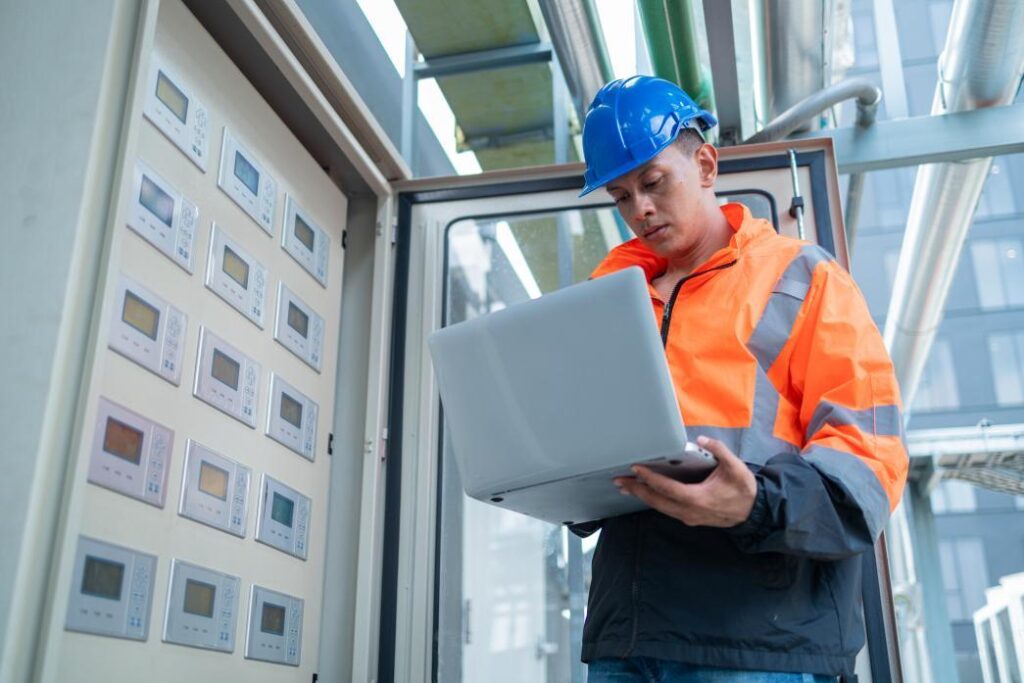
1. Technology integration and multifunctionality
In the future, gas analyzers will integrate more detection technologies to achieve simultaneous detection of multi-component gases, improve monitoring efficiency and data quality. For example, integrating NDIR, FTIR and gas chromatography in the same device can achieve comprehensive analysis of complex gas mixtures.
2. Miniaturization and portability
With the development of microelectronics technology, the miniaturization and portability of gas analyzers will become an important trend. Portable gas analyzers will be more widely used in on-site monitoring, emergency detection and other occasions to improve the flexibility and response speed of monitoring. For example, micro gas sensors based on MEMS technology (micro-electromechanical systems) have been used in portable gas analyzers.
3. Intelligence and networking
Intelligence and networking are important directions for the future development of gas analyzers. By combining the Internet of Things (IoT) and cloud computing technology, gas analyzers can achieve real-time data transmission and remote control, improving the convenience and intelligence of monitoring. For example, smart gas analyzers can automatically calibrate, diagnose faults, and upload data to the cloud platform via wireless networks, facilitating data storage and analysis.
4. Environmental protection and sustainable development
In the process of developing and producing gas analyzers, environmental protection and sustainable development concepts will receive more attention. Develop gas analyzers with low energy consumption, long service life, and recyclability to reduce negative impacts on the environment. For example, gas analyzers powered by renewable energy can operate in the field for a long time, reducing dependence on traditional energy.
Conclusion
As an important tool for greenhouse gas detection, gas analyzers play an important role in addressing global climate change. By accurately monitoring greenhouse gas concentrations and emissions, they provide solid data support for scientific research, policy making, and environmental protection. With the continuous advancement of technology and the continuous expansion of applications, gas analyzers will play an important role in more fields and make greater contributions to achieving global sustainable development goals.
Climate change is a global challenge that requires countries to work together to address it. Gas analyzers provide important data support and technical guarantees for global climate cooperation. In the future, with the continuous innovation and development of gas analyzer technology, we have reason to believe that global climate governance will achieve more significant results and mankind will usher in a better future.





